Over 20 years manufacturing experience of Road marking machine and road marking removal machine.
sales@lxdmarking.com+86 15805293662
How to Apply Pavement Markings with Precision Using a Marking Machine
Mastering Precision in Pavement Marking: The Role of Modern Machines
In the ever-evolving world of transportation infrastructure, the role of pavement marking machines has become increasingly vital. These machines are not just tools for marking lines; they are precision engineers that ensure safety, efficiency, and durability on our roads. As drivers, cyclists, and pedestrians rely on clear markings to navigate safely, the importance of accurate pavement markings cannot be overstated. This article delves into the significance of pavement marking machines, the different types available, the importance of site preparation, operating techniques, advanced features, real-world applications, maintenance practices, and the future of this technology.
Pavement marking machines come in various types, each suited for different applications and surface types. The three main types are cold paint machines, hot mix machines, and thermoplastic machines. Cold paint machines are typically used for smaller markings such as cracks and curbs. They work by applying a cold paint that dries quickly, creating a durable marking without the need for heat. Hot mix machines, on the other hand, are used for larger markings like barrier strips and median strips. These machines apply a hot mix that sets over time, providing a more permanent and high-quality markings. Thermoplastic machines are used for flexible markings, such as those in flexible pavements. These machines apply a thermoplastic material that can deform and return to its original shape, making them ideal for areas with heavy traffic or uneven surfaces.
Site Preparation for Effective Pavement Marking
Before any marking can be applied, the pavement surface must be prepared. This involves cleaning the surface to remove debris and ensuring proper drainage. Potholes and cracks must be patched or filled to prevent them from affecting the markings. Proper drainage is crucial to prevent water from pooling on the surface, which can lead to marking degradation. Weather conditions also play a significant role in site preparation. Rain or snow can affect the surface, so it is essential to wait for dry conditions before applying any markings. Site preparation ensures that the markings are applied smoothly and accurately, resulting in a durable and visible markings surface.
Operating a Pavement Marking Machine for Optimal Performance
Operating a pavement marking machine requires a combination of skill and attention to detail. Selecting the appropriate marking material is the first step. Cold paint machines use water-based paint, while hot mix machines use bitumen or other hot mix materials. Thermoplastic machines use thermoplastic polymers. Each type of machine has its own set of materials, so selecting the right one is crucial for achieving the desired results. Adjusting the pressure and flow rate of the machine is also essential. Too much pressure can cause skipping, while too little can lead to waste. Calibrating the machine ensures that the markings are consistent and evenly spaced. Regular maintenance and training for operators are also vital to ensure that the machine is operating at peak efficiency.
Techniques for Accurate and Consistent Pavement Markings
Achieving precise and consistent markings requires a combination of techniques. Creating straight lines is a fundamental technique, and using the machine's sprayer correctly is essential. Turning and making curves must be done carefully to avoid misalignment. Avoiding obstacles and ensuring that the machine is properly aligned with the surface are also crucial steps. Managing different surface types, such as concrete, asphalt, and gravel, requires different techniques. For example, gravel surfaces may require lower pressure to prevent compaction. Advanced techniques such as pressure control and variable speed adjustments can further enhance the precision of the markings.
Advanced Features and Innovations in Pavement Marking Machines
Modern pavement marking machines are equipped with advanced features that enhance precision and efficiency. GPS-guided marking is one such feature, which allows the machine to follow precise coordinates, making it ideal for large-scale projects. Automated line drawing systems can draw multiple lines simultaneously, reducing the time required for complex markings. These machines can also follow digital plans or maps, ensuring that markings are applied accurately. Environmental benefits are another consideration. Many machines are designed to minimize emissions and energy consumption, making them more sustainable.
Case Studies: Real-World Applications of Precision Pavement Marking
The importance of precision in pavement marking is evident in real-world applications. Urban roads often require precise markings to prevent accidents and improve traffic flow. For example, a city project using precise markings reduced accident rates by 40%. Similarly, highway markings achieved by automated systems have improved safety and reduced maintenance costs. Case studies also highlight the challenges overcome, such as heavy traffic and poor weather conditions, and the benefits achieved, such as improved safety and reduced environmental impact.
Best Practices for Maintaining Precision in Pavement Markings
Maintaining precision in pavement markings requires ongoing care and attention. Regular inspections are essential to catch any issues early, ensuring the machine is in good working condition. Calibration is another key step to ensure that the machine is operating at peak efficiency. Troubleshooting common issues, such as machine malfunction or marking material shortages, is also crucial. By following best practices, operators and maintenance teams can ensure that the machine continues to produce high-quality markings.
The Role of Technology in Enhancing Pavement Marking Precision
In conclusion, the role of technology in enhancing the precision of pavement markings is indelible. Modern machines are equipped with advanced features such as GPS-guided marking, automated line drawing, and environmental benefits, ensuring that markings are accurate, efficient, and sustainable. Case studies highlight the importance of precision in preventing accidents and improving safety. By following best practices and investing in the right machinery, operators can ensure that their markings are of the highest quality. The future of pavement marking technology looks promising, with ongoing innovations expected to further enhance precision and efficiency. In the world of transportation infrastructure, precision matters, and modern machines are the key to achieving it.

